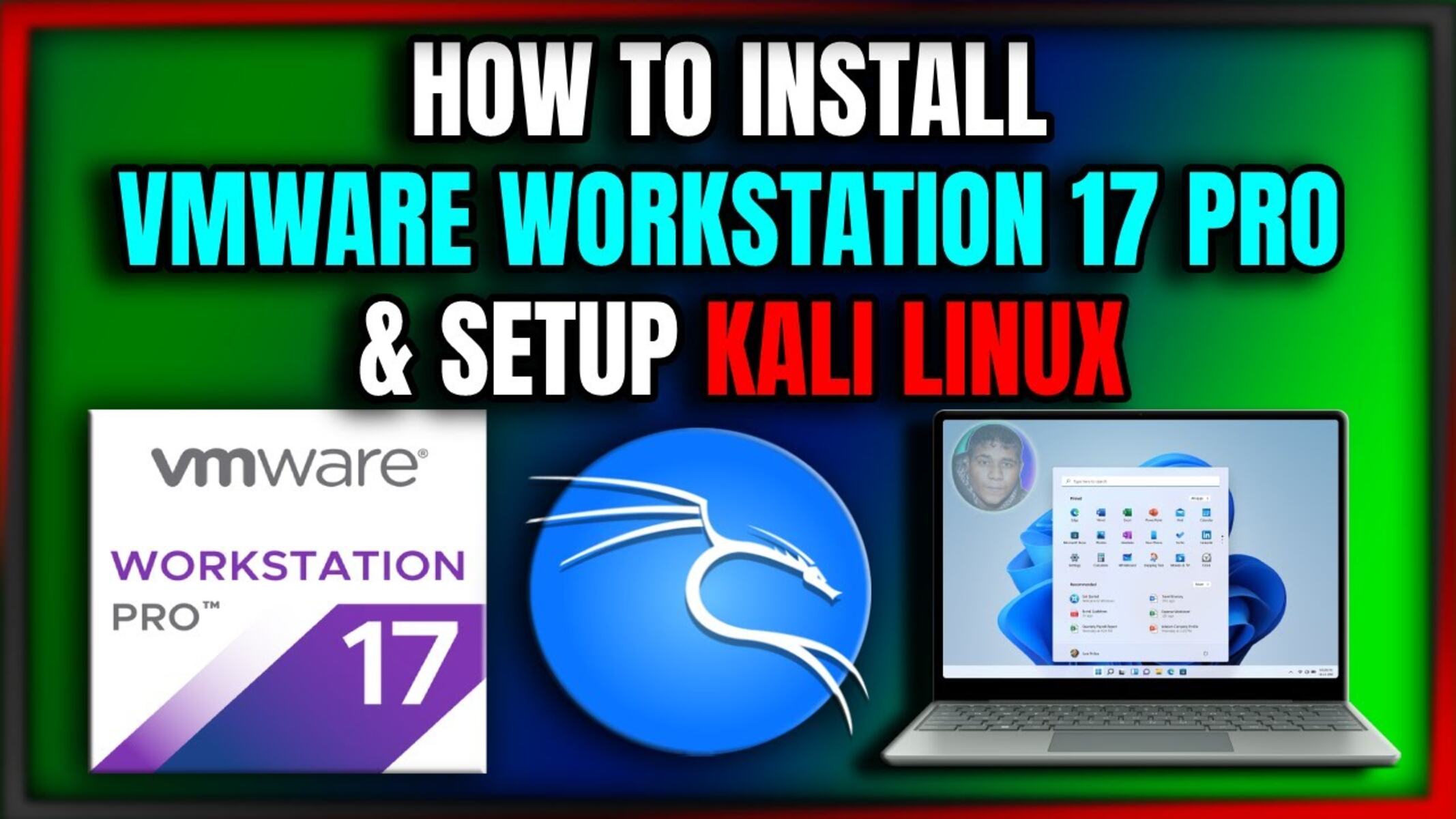Introduction
Welcome to this comprehensive guide on how to install OpenStack on VMware Workstation. OpenStack is an open-source cloud computing platform that allows you to build and manage a private or public cloud infrastructure. By installing OpenStack on a virtual machine using VMware Workstation, you can create a simulated environment for testing and learning purposes. This tutorial will take you through the step-by-step process of setting up OpenStack on VMware Workstation, allowing you to explore its features and functionalities.
Before we dive into the installation process, it is important to have a good understanding of the prerequisites and the overall setup. This will ensure a smooth installation process and help you avoid any potential issues or errors.
In this guide, we will cover the following topics:
- Prerequisites: We will outline the necessary software and hardware requirements needed to install OpenStack on VMware Workstation.
- Downloading and Installing VMware Workstation: We will guide you through the process of acquiring and installing VMware Workstation, highlighting any specific configuration steps that need to be taken.
- Downloading the OpenStack ISO Image: We will provide instructions on how to obtain the OpenStack ISO image, which is required for the installation process.
- Creating a New Virtual Machine: We will walk you through the steps of creating a virtual machine in VMware Workstation, ensuring that it meets the necessary specifications for running OpenStack.
- Installing OpenStack on the Virtual Machine: We will guide you through the installation process, including any necessary configurations that need to be made.
- Configuring OpenStack: We will explain how to configure the various components of OpenStack to ensure proper functionality.
- Testing OpenStack: Lastly, we will show you how to verify that OpenStack is functioning correctly and conduct a basic test to confirm its capabilities.
By following this guide, you will have a functional OpenStack environment running on VMware Workstation, enabling you to explore and experiment with its cloud computing capabilities. So, let’s get started with the prerequisites.
Prerequisites
Before you begin the installation of OpenStack on VMware Workstation, there are a few prerequisites that you need to fulfill. These requirements ensure that your system is compatible and properly configured for the installation process. Here is a list of the prerequisites:
- Operating System: Ensure that your computer is running a compatible operating system. VMware Workstation is compatible with both Windows and Linux operating systems.
- System Requirements: Make sure that your system meets the minimum hardware requirements to run VMware Workstation. This typically includes sufficient RAM, processor speed, and disk space.
- VMware Workstation: Download and install the latest version of VMware Workstation on your computer. This software will be used to create and run the virtual machine for OpenStack.
- OpenStack ISO Image: Obtain the ISO image for the OpenStack release that you wish to install. This image contains all the necessary files and packages required for the installation.
- Virtualization Enabled: Ensure that virtualization is enabled in your computer’s BIOS settings. This is necessary for running virtual machines and installing OpenStack on VMware Workstation.
- Network Configuration: Configure your network settings to ensure that the virtual machine can access the internet and communicate with other devices in the network.
- Storage Configuration: Allocate sufficient disk space for the virtual machine to run OpenStack. This will ensure that you have enough storage for the installation and any additional components or applications that you may want to add.
- Backup: It is highly recommended to create a backup of your system before proceeding with the installation. This will protect your data in case anything goes wrong during the installation process.
By fulfilling these prerequisites, you will be ready to proceed with the installation of OpenStack on VMware Workstation. It is important to ensure that each requirement is met to avoid any issues or complications during the installation process. Once all the prerequisites are in place, you can move on to the next steps of the installation process.
Step 1: Downloading and Installing VMware Workstation
In this step, we will guide you through the process of downloading and installing VMware Workstation on your computer. VMware Workstation is the virtualization software that will allow you to create and run virtual machines, including the one for OpenStack.
- Obtain VMware Workstation: Visit the official VMware website and navigate to the VMware Workstation download page. Choose the appropriate version for your operating system and click on the download button to begin the download.
- Run the Installer: Once the download is complete, locate the installation file and run it. Follow the on-screen instructions to initiate the installation process.
- Choose Installation Options: During the installation process, you will be presented with various options. Review and choose the options that best suit your preferences. You can select the installation location, shortcuts, and other settings.
- Accept the License Agreement: Read through the VMware Workstation license agreement and accept the terms and conditions to proceed with the installation.
- Wait for the Installation: The installation process may take a few minutes. Ensure that you have a stable internet connection and sufficient disk space for the installation.
- Complete the Installation: Once the installation is complete, you will be prompted to restart your computer. It is recommended to restart your computer to ensure that all changes are applied successfully.
- Verify the Installation: After the restart, open VMware Workstation to verify that it has been installed correctly. You should see the application’s interface, indicating that the installation was successful.
Congratulations! You have now successfully downloaded and installed VMware Workstation on your computer. This virtualization software is essential for creating and managing virtual machines. In the next step, we will guide you through the process of configuring VMware Workstation in preparation for the OpenStack installation.
Step 2: Configuring VMware Workstation
Once you have installed VMware Workstation, the next step is to configure it to ensure optimal performance and compatibility with OpenStack. In this step, we will guide you through the process of configuring VMware Workstation for the installation of OpenStack.
- Open VMware Workstation: Launch VMware Workstation on your computer by clicking on the application icon in your desktop or start menu.
- Check for Updates: It is important to keep VMware Workstation up to date to have access to the latest features and bug fixes. Check for updates by navigating to the “Help” menu and selecting “Check for Updates”. Follow the prompts to install any available updates.
- Configure Network Settings: Open the “Edit” menu and select “Virtual Network Editor”. Here, you can configure the network settings for your virtual machines. Ensure that the virtual network settings are compatible with your network configuration, and make any necessary adjustments as needed.
- Configure Processor and Memory: Go to “Edit” > “Preferences” and navigate to the “Memory” tab. Adjust the memory allocation and processor settings according to your system’s capabilities and the requirements of your OpenStack installation. It is recommended to allocate sufficient resources to ensure smooth operation of the virtual machine.
- Enable Nested Virtualization (Optional): If you plan to run nested virtual machines within your OpenStack environment, you may need to enable nested virtualization support in VMware Workstation. Check your CPU’s compatibility and enable nested virtualization if necessary.
- Configure Storage: VMware Workstation allows you to choose the storage locations for your virtual machines. You can specify the default storage directory and configure advanced storage options as per your preference. Ensure that you have enough disk space available for the OpenStack installation.
- Save Configuration: Once you have made the necessary configurations, save the changes and close the preferences dialog box.
By properly configuring VMware Workstation, you ensure that your virtual machines, including the one for OpenStack, perform optimally and align with your system requirements. In the next step, we will guide you through the process of downloading the OpenStack ISO image, a crucial component for the installation of OpenStack on VMware Workstation.
Step 3: Downloading the OpenStack ISO Image
In this step, we will guide you through the process of downloading the OpenStack ISO image, which is required for the installation of OpenStack on VMware Workstation. The ISO image contains all the necessary files and packages needed for the installation of OpenStack.
- Select the OpenStack Release: Determine which version of OpenStack you want to install and locate the corresponding ISO image. Visit the official OpenStack website or the community repository to find the desired release.
- Choose the ISO Image: Once you have identified the OpenStack release, navigate to the download section and select the ISO image for the respective release. Ensure that you choose the correct architecture (32-bit or 64-bit) that matches your system.
- Start the Download: Click on the download link for the chosen ISO image and wait for the download to start. The download time will depend on the size of the ISO image and your internet connection speed.
- Verify the Integrity: After the download is complete, it is essential to verify the integrity of the ISO image to ensure it has not been corrupted during the download process. You can do this by checking the file’s checksum or using a tool like MD5 or SHA-256 verification.
- Store the ISO Image: Once the integrity of the ISO image is confirmed, store it in a location on your computer where you can easily access it for the OpenStack installation.
By downloading the OpenStack ISO image, you have obtained the necessary files to proceed with the installation of OpenStack on VMware Workstation. In the next step, we will guide you through the process of creating a new virtual machine in VMware Workstation, ready to install OpenStack.
Step 4: Creating a New Virtual Machine
In this step, we will walk you through the process of creating a new virtual machine in VMware Workstation. This virtual machine will serve as the environment for installing OpenStack.
- Launch VMware Workstation: Open VMware Workstation on your computer by clicking on the application icon in your desktop or start menu.
- Create a New Virtual Machine: In the VMware Workstation window, click on “Create a New Virtual Machine” to start the virtual machine creation process.
- Choose Configuration Method: Select “Typical” configuration method to proceed with the default settings for the virtual machine. Alternatively, you can choose the “Custom” configuration method if you want more control over the virtual machine settings.
- Select the Installer Disk Image: Browse and select the OpenStack ISO image that you downloaded in the previous step as the installer disk image for the virtual machine.
- Choose Guest Operating System: Specify the guest operating system that matches the version of OpenStack you are installing.
- Assign Resources: Allocate the necessary resources to the virtual machine, such as the number of processors, amount of memory, and disk space. Ensure that the allocated resources meet the recommended requirements for OpenStack.
- Configure Network Connection: Choose the network connection type for the virtual machine, whether it’s bridged, NAT, or host-only. This will allow the virtual machine to access the network and communicate with other devices.
- Set Virtual Machine Name and Location: Provide a meaningful name for the virtual machine and specify the location where it will be stored on your computer’s storage.
- Review and Finish: Review the virtual machine settings, make any necessary adjustments, and click on the “Finish” button to create the virtual machine.
By creating a new virtual machine in VMware Workstation, you have prepared the environment for installing OpenStack. In the next step, we will guide you through the installation process of OpenStack on the virtual machine.
Step 5: Installing OpenStack on the Virtual Machine
In this step, we will guide you through the process of installing OpenStack on the virtual machine created in VMware Workstation. With the virtual machine ready, you can proceed with the installation of OpenStack, which will provide you with a powerful cloud computing platform.
- Power on the Virtual Machine: Start the virtual machine you created by selecting it from the VMware Workstation interface and clicking on the “Power On” button.
- Select the Installation Method: Once the virtual machine has booted up, you will be prompted to select the installation method for OpenStack. Choose the installation method suitable for your needs and follow the on-screen instructions.
- Configure Installation Parameters: During the installation process, you will be prompted to configure various parameters, such as network settings, hostname, domain name, and administrator credentials. Make sure to provide accurate and appropriate information accordingly.
- Begin the Installation: After configuring the installation parameters, start the OpenStack installation process. The installer will automatically install the necessary packages and dependencies required for OpenStack.
- Monitor the Installation Progress: Keep an eye on the installation progress as it proceeds, and ensure that there are no error messages or issues encountered.
- Complete the Installation: Once the installation is complete, you will receive a confirmation message. Take note of any post-installation instructions or configurations that need to be performed.
By following these steps, you will successfully install OpenStack on the virtual machine created in VMware Workstation. The installation process may take some time, depending on your hardware specifications and the size of the OpenStack release. In the next step, we will guide you through the process of configuring OpenStack for optimal functionality.
Step 6: Configuring OpenStack
After successfully installing OpenStack on the virtual machine, the next step is to configure it to ensure proper functionality and customization according to your requirements. In this step, we will guide you through the process of configuring OpenStack.
- Access the OpenStack Dashboard: Open your web browser and enter the IP address or hostname of the virtual machine on which OpenStack is installed, followed by the port number for the OpenStack dashboard (usually 80 or 443). This will take you to the OpenStack dashboard login page.
- Login to the Dashboard: Provide the administrator credentials that you configured during the installation process to log in to the OpenStack dashboard.
- Navigate the Dashboard: Familiarize yourself with the OpenStack dashboard interface, which provides access to various components and features of OpenStack.
- Configure OpenStack Services: OpenStack is composed of several services, such as Nova, Neutron, Glance, and Cinder. Navigate to the corresponding sections in the dashboard and configure each service according to your requirements. This may include setting up networking, configuring virtual machine instances, managing storage, and defining security groups.
- Create Users and Projects: In the dashboard, you can create users and projects to manage access control and resource allocation within OpenStack. Assign appropriate roles and permissions to users to control their access to resources and services.
- Manage and Configure Networking: OpenStack provides networking capabilities to create and manage virtual networks, routers, and subnets. Configure the networking settings according to your network infrastructure requirements.
- Set Security Measures: Enhance the security of your OpenStack environment by configuring security groups, firewall rules, and access control lists to protect your virtual machines and data.
- Configure Compute and Storage: Customize the compute and storage settings in OpenStack to match your workload requirements. This may involve configuring hypervisor settings, managing compute nodes, and creating and managing storage volumes.
- Implement Advanced Features: Depending on your needs, you can explore and configure additional advanced features offered by OpenStack, such as load balancing, object storage, orchestration, and telemetry.
By following these configuration steps, you will be able to tailor OpenStack to your specific needs and ensure that it is configured optimally for your virtual environment. OpenStack provides extensive documentation and support resources to assist you in configuring each component. In the next step, we will guide you through testing OpenStack to verify its proper functioning.
Step 7: Testing OpenStack
Once you have configured OpenStack according to your requirements, it is crucial to test its functionality to ensure that all components are working as expected. In this step, we will guide you through the process of testing OpenStack.
- Access the OpenStack Dashboard: Open your web browser and enter the IP address or hostname of the virtual machine on which OpenStack is installed, followed by the port number for the OpenStack dashboard (usually 80 or 443).
- Login to the Dashboard: Use the administrator credentials to log in to the OpenStack dashboard.
- Verify Compute Service: Create a virtual machine instance in OpenStack to test the compute service. Specify the necessary details like flavor, image, network, and security settings. Start the virtual machine instance and ensure that it boots up successfully.
- Test Networking: Create a virtual network and subnet in OpenStack. Launch multiple virtual machine instances and assign them to the network. Check if the instances can communicate with each other within the network.
- Test Object Storage: Upload a file to the Object Storage service in OpenStack. Retrieve the uploaded file and verify its integrity to ensure proper functioning of the storage service.
- Try Load Balancing: Create a load balancer pool and add multiple instances to it. Test if the load balancer distributes requests evenly across the instances and adjusts routing based on the load.
- Verify Security Measures: Apply security group rules and firewall settings to restrict access to virtual machines. Test if the defined security measures are effectively enforced.
- Check Resource Usage: Monitor the resource usage in OpenStack, such as CPU, memory, and storage. Verify that resource allocations and usage statistics are accurate.
- Test High Availability (Optional): If you have configured the high availability feature in OpenStack, test the failover capabilities by intentionally disrupting a service or node and verifying if the workload is automatically shifted to another available resource.
By thoroughly testing OpenStack, you can ensure that all services and functionalities are working correctly, and your cloud infrastructure is operational. If any issues or anomalies are identified during the testing process, refer to the OpenStack documentation or seek assistance from the community to resolve them. Once you are satisfied with the performance and functionality of OpenStack, you can start utilizing its full potential for your cloud computing needs.
Conclusion
Congratulations! You have successfully completed the installation and configuration of OpenStack on VMware Workstation. By following the step-by-step guide in this tutorial, you have set up a powerful cloud computing platform that can be used for various purposes, such as testing, development, and learning.
Throughout this tutorial, we explored the prerequisites for installing OpenStack on VMware Workstation, downloaded and installed VMware Workstation, obtained the OpenStack ISO image, created a new virtual machine, installed OpenStack, configured the system, and tested its functionality. By following these steps, you have gained a solid foundation in deploying OpenStack and can now start exploring its vast capabilities.
Remember, OpenStack is a highly customizable and feature-rich cloud platform. There are numerous additional configurations, advanced features, and optimizations that can be done to fine-tune your OpenStack environment. It is recommended to consult the official OpenStack documentation or join the community forums to delve deeper into these advanced topics.
As you continue to work with OpenStack, you will discover its versatility and flexibility in building and managing cloud infrastructures. Whether you are setting up a private cloud for your organization, experimenting with new technologies, or learning about cloud computing, OpenStack on VMware Workstation offers a powerful and easily accessible environment.
Thank you for following this guide. We hope it has provided you with a comprehensive understanding of how to install and configure OpenStack on VMware Workstation. Enjoy exploring and leveraging the capabilities of OpenStack for your cloud computing needs!

























